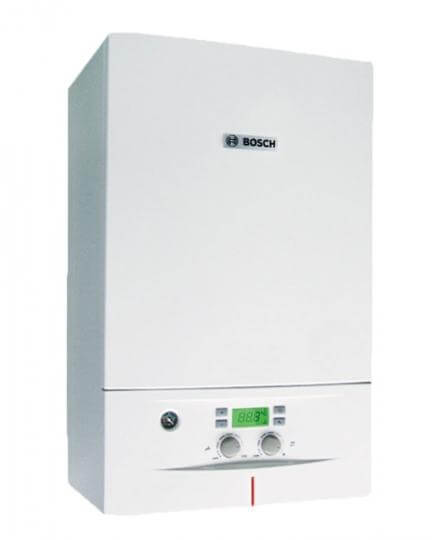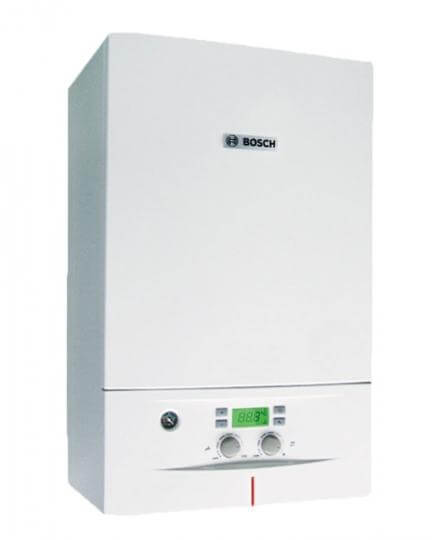Junkers Condens 2000 W Zwb24-1re Condensing Erp Methane Or LPG Boiler Complete With Smoke Exhaust Kit
Junkers Condens 2000 W Zwb24-1re Condensing Erp Methane Or LPG Boiler Complete With Smoke Exhaust Kit - Coaxial smoke kit is backordered and will ship as soon as it is back in stock.
Couldn't load pickup availability
How shipping works
How shipping works
Shipping costs vary depending on the weight and shipping method of your order. Our shipping services:
- Standard Shipping: Estimated delivery within 2 to 5 business days
- Premium Shipping: Guaranteed delivery within 24 business hours
- Premium Shipping + Home Delivery: Guaranteed delivery within 24 business hours
See the tables for standard shipping prices for Italy and the Minor Islands and Disadvantaged Areas.
For more details on Premium Shipping, please visit the Premium Shipping page.
Customer service
Customer service
Our customer service team is dedicated to providing support to our customers with any issues or questions they may have before or after purchasing our products.
Use the direct communication channel to speak with one of our representatives, or send us an email at one of the addresses listed on the contact us page.
Our customer service team is made up of highly qualified professionals who are always ready to help customers resolve any issue or answer any question quickly and efficiently. We are committed to ensuring maximum customer satisfaction and providing the highest quality after-sales service. So, if you need assistance, don't hesitate to contact us; we'll be happy to help in any way we can.
Description
Description
THE BOILER IS SUPPLIED WITH METHANE, FOR THE TRANSFORMATION TO LPG, CONTACT THE AUTHORIZED AREA ASSISTANCE CENTER IN ADVANCE
Technical features
- Heat and DHW energy efficiency class (ErP)
- For heating and domestic hot water production
- Forced draft sealed chamber
- Declared load profile: L
- Nominal heat output: 24 kW
- Nominal heat input max. in heating: 25 kW
- Seasonal space heating energy efficiency: 88%
- Continuous sanitary production: 10.5 l/min
- Dimensions (Depth x Width x Height): 355 x 440 x 725 mm; 37kg
- Version: CNG
CONDENSING 2000 W
Condensation efficiency at the best value for money
Condens 2000 W is a condensing boiler with instantaneous domestic hot water production, fueled by methane and convertible to LPG.
The Condens 2000 W wall-mounted condensing gas boiler guarantees you the energy efficiency of condensing at an unbeatable price: with this boiler, savings start with the purchase and will also be evident in subsequent gas and electricity bills.
Convenient from all points of view
With an energy production of up to 25.6 kW, Condens 2000 W is the ideal efficient and convenient solution for single and two-family homes. This boiler is designed to last over time, thanks to the robust stainless steel lamellar bithermal heat exchanger and the 1:3 modulation range, which allows to reduce the number of times the burner starts, increasing the efficiency of the boiler and ensuring a longer life. To further reduce heating and domestic hot water production costs, Condens 2000 W is ready for integration with a solar system: thus, in addition to saving money, you are doing good for the environment.
Simple and economical installation and maintenance
Thanks to the compact dimensions of just 355x440x725 mm, the low weight (37 kg) and the 8-litre expansion tank on the heating side already integrated in the rear, Condens 2000 W can be installed very easily even in the smallest spaces. Thanks to the distance of the connections from the wall of 50 mm, installation is quick and easy. Boiler programming is also extremely easy, thanks to the intuitive LCD display, which shows all the necessary information and any codes in the event of malfunction, and the possibility of remote control via the TRZ 12-2 On/Off digital room chronothermostat.
Advantages
- Wall-mounted condensing gas boiler in combined version for instantaneous production of domestic hot water, fueled by methane and convertible to LPG
- High domestic comfort: according to UNI EN 13203 for the production of domestic hot water
- Easy to install and maintain thanks to the casing composed of three parts: front cover, side panels and visible control panel
- Robustness and maximum use of energy, thanks to the integrated bithermal exchangers, the primary in stainless steel and the secondary recovery unit in aluminium-silicon alloy
- The power adapts to your real needs, thanks to the modulating gas valve/fan unit
- Very quiet operation with noise emissions below 36 dB(A)
The ErP legislation and the new energy labels
The future of heating systems
Starting from 26 September 2015, in order to be placed on the market, heating and hot water production systems will have to comply with the ErP (Energy Related Products) regulations issued by the European Union. The ErP standards favor the eco-compatible design of products that consume energy from fossil fuels and have the aim of reducing energy consumption and CO2 emissions, as well as providing consumers with transparent and homogeneous information on the energy efficiency of the appliances, favoring their comparison. Regulations N 811/2013 and 812/2013 provide for a specific energy labeling of appliances for heating and domestic hot water production. Regulations N 813/2013 and 814/2013 prescribe, among other things, the minimum energy efficiency and pollutant emissions requirements that manufacturers of equipment for heating and domestic hot water production must comply with. These regulations therefore raise energy efficiency standards, improving system performance and excluding less performing technologies from the market.
The energy label will be supplied by the manufacturer with the appliance and will represent concrete help for the consumer, allowing him to learn more about the characteristics of the system, acquire greater awareness of the energy savings allowed and make the best choice of what to buy. The energy label will provide information on the energy class of the product, on a scale between A++ and G, and on other additional notations, such as power and noise emissions.
The ErP legislation provides for two types of labelling:
the former is supplied by the manufacturer together with the product for heating and/or domestic hot water production appliancesthe second for systems composed of several elements.
In this second case, the label indicates the levels of energy efficiency that can be reached thanks to all the components used, allowing the score attributed to each appliance to increase and increasing the energy class of the system: it is therefore the task of whoever makes/installs the system to supply the consumer the correct explanatory label.
The ErP standards represent an opportunity to develop a market of highly efficient technologies, such as condensing, heat pumps, solar thermal, cogeneration and the integration of different energy sources in a single system. These technologies will have an impact on home consumption, approximately 80% of which is due to heating and the production of hot water, and are already being incentivized at a tax level today.
Junkers Bosch is already in line with the dictates of the ErP legislation, demonstrating the future orientation that has always distinguished the brand.
Product Guarantee: All products for sale on our site are new and packed. The warranty on this item is 24 months from the date of purchase.
Technical Data Sheet
Technical Data Sheet
- peso: 40.0 kg
- classe energetica produzione acs: A
- classe energetica riscaldamento: A
- gas: Methane/LPG
- marca: Junkers Bosch
- metri quadri : 120
- modello: CALD_1953
- potenza in kw: 24
- potenza nominale: 24
- superficie riscaldabile mq: 120




